Linkfest #35: Diasimocracy, Four Loko Collectors, and What It's Like To Survive A Grizzly Attack
Hello folks!
It’s time for "the opposite of doomscrolling” — my next “Linkfest”, in which I sift through the entirety of known cyberspace to find the finest nuggets of science, technology and culture, just for you.
If you’re a subscriber, thank you! If not, you can sign up here — it’s a Guardian-style, pay-whatevs-you-want affair; the folks who kick in help keep the Linkfest free for everyone else.
Please share this email with anyone who'd enjoy it!
Let’s begin ...
1) 🎨 Elise Ferguson’s gorgeous line art

I just discovered Elise Ferguson, who creates mesmerizing works of geometric lines. As this write-up at the Shrine gallery notes, from a distance her stuff looks highly regularized — almost industrial — but when you get up close you’re drawn in deeper by the imperfections:
Her labor-intensive process begins with applying multiple rounds of pigmented Venetian plaster onto panels, which are then drawn over with imperfect guidelines in graphite to help register multiple rounds of silkscreened plaster in repeating geometric designs. Embracing this system's inevitable misalignments and uneven results imbues the works with unexpected texture, energy, and a palpable sense of touch. While the paintings initially appear exacting and machine-made, they quickly reveal a hand-hewn quality that animates and enlivens the surfaces. [snip]
Borders blur, pencil lines meander and smudge, and the crisp shapes she begins with eventually vibrate with motion and straying edges. The friction between optical clarity and material reality lends Ferguson’s work a quiet emotional charge and an unexpected resonance that borders on the spiritual.
I am smitten. Her work is currently on display until June 21 in NYC; I am going to run, not walk, to check it out.
And: Go look at her Instagram feed to grasp the scale of some of these pieces. They’re sometimes huge, filling entire walls, and the sheer size creates a good part of their impact. Plenty more pix over at Artsy, too.
2) 📖 Sentence lengths are decreasing
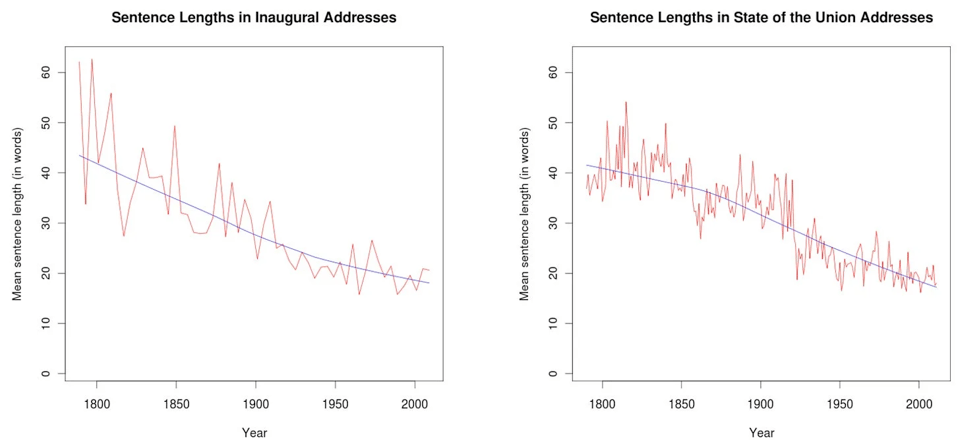
Huh. As Arjun Panickssery writes …
Sentence lengths have declined. The average sentence length was 49 for Chaucer (died 1400), 50 for Spenser (died 1599), 42 for Austen (died 1817), 20 for Dickens (died 1870), 21 for Emerson (died 1882), 14 for D.H. Lawrence (died 1930), and 18 for Steinbeck (died 1968). J.K Rowling averaged 12 words per sentence (wps) writing the Harry Potter books 25 years ago.
So the decline predates television, the radio, and the telegraph—it’s been going on for centuries. The average sentence length in newspapers fell from 35wps to 20wps between 1700 and 2000. The presidential State of the Union address has gone from 40wps down to under 20wps, and the inaugural addresses had a similar decline. (From Jefferson through T. Roosevelt, the SOTU address was delivered to Congress without any speech, and print was the main way that inaugural addresses were consumed for most of their history.) Warren Buffett’s annual letter to shareholders dropped from 17.4wps to 13.4wps between 1974 and 2013.
What’s going on? Why have our sentences written in English been shrinking for centuries now?
Nobody knows, but Panickserry has a few hypotheses. Possibly sentences were longer in the past because so few people were literate, and they prized those ornate, multi-clausal, latinate constructions. Or maybe the advent of print journalism, with its terse style, influenced sentence-writing at large.
Or possibly — and this is the hypothesis that Panickserry thinks is the most persuasive — sentences got shorter because shorter sentences are, as literacy studies have found, more readable. So our sentences evolved towards brevity, under the pressure of “become as readable as possible”.
So shorter is, in this case, literally “better” — at least when judged by legibility at first glance. Certainly long, complex, byzantine sentences carry their own aesthetic pleasures, and can convey ideas less accessible in pithier prose. But these days we mostly write to communicate — and to do so quickly. In that arena? Shorter wins out.
3) 🐻 What it’s like to survive a grizzly attack
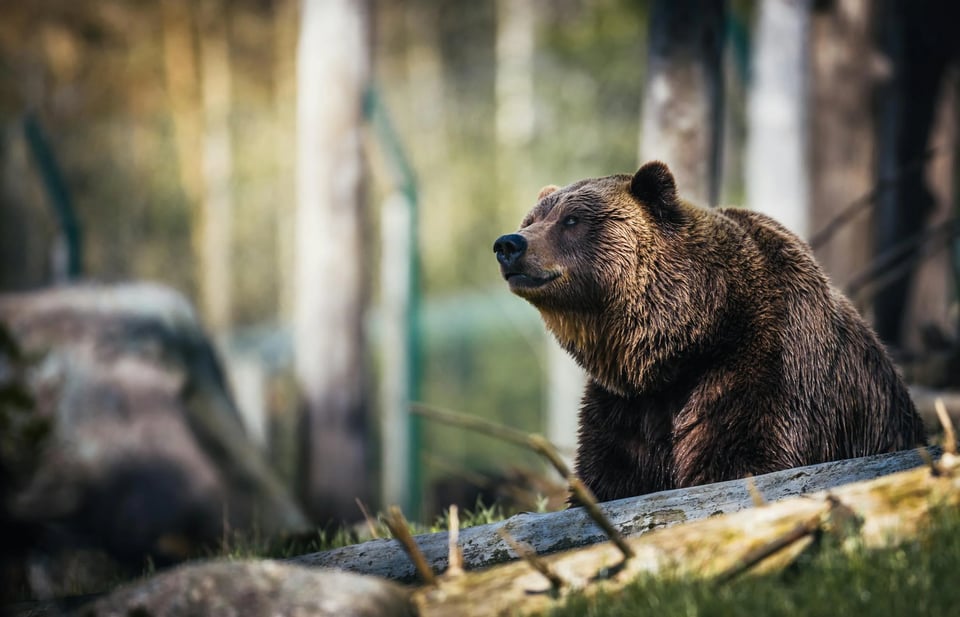
John Benson and Micah Nelson went for a hike in northern Montana when …
Dropping below the snowline, they marched through a rocky scree field an hour later into a copse of stunted conifer trees. Suddenly, two little fur balls — grizzly cubs born six months earlier — blasted out of the bush in a blur only feet away, passing them and then disappearing into the forest. “I could’ve reached down and touched them,” Nelson tells me.
Bentzel and Nelson looked at each other. “Damn! Did you see that? Ah, man, where’s Mom?” Bentzel asked. Sows will charge humans or other animals if they approach their cubs too closely.
The men heard rustling in the bushes uphill to their right. Terrified, they both yelled, “Hey, bear, hey bear.”
As they turned to investigate the noise, a large, wet, haggard grizzly, dark brown with cinnamon streaks, charged toward them from 50 feet away. Its ears were erect and pointed forward as it closed the distance in just two or three bounds, reaching speeds of approximately 35 miles per hour.
I don’t want to spoil the details here — it’s harrowing and wild. Suffice to say both men survived, but the story they came back with is hair-raising. (Sample detail: “The bear’s claws were as long as my fingers, like looking at a catcher’s mitt with claws.” Ay yi yi.)
You can read the rest of it in this piece Benjamin Alva Polley wrote for Rolling Stone; unpaywalled copy here in case the previous link doesn’t work.
4) 🍻 Four Loko is now worth $150 a can

When Four Loko became a popular drink amongst college kids in the late 00s, it was known as a “blackout in a can”: It had a roughly 14% alcohol content, so a 16-ounce can was like drinking four regular beers. Plus, each can included about 156 mg of caffeine, which is nearly as much as two cups of coffee. A party that served lots of Four Loko usually ended in a Caligulan display of vomit — that is, when it didn’t also end in fistfights or frat dudes hospitalized with heart arrhythmia.
In 2010, the federal government flat-out banned the drink. Shelves were cleaned out in frantic panic-buying, such that within weeks it was hard to find a can anywhere.
A couple of years later — around 2013 I think — I was buying some beer at a corner store in NYC’s east village, and two college kids next to me discovered a four-pack of Four Loko hidden at the back of the fridge. They were exultant. “This is like finding some rare old burghundy in someone’s estate sale,” one said, as they bought it.
So it was with hilarious interest that I read Claire McNear’s new piece in The Ringer that’s all about Four Loko collectors — i.e. people who bought a stash back in the day, and still own it.
Even though the booze is so old, and likely horribly contaminated with residue from the eroding aluminum, they get high-dollar offers to buy a single can.
Here’s Michael, who bought 156 cans in late 2010, just as the ban was taking effect …
… last year, Michael — who did, in fact, get a job, and now works for the state of Maryland — was at his parents’ dining table over the holidays when his phone pinged with a new message. “Hey,” the message read. “I’m having a New Year’s Eve party with some friends and I would love to buy from you. I’m thinking $125, $150 a can?”
Or there’s James, who still has six cans left …
“I probably should just get rid of them now,” he says. But every once in a while, someone makes him an offer—most recently $450 for the whole bunch. Another offered him $100 for a single can, which the would-be buyer said he planned to drink. “I’m like, ‘You might die. I don’t think that’s a good idea. I don’t know if this is drinkable.’ But if someone were to offer me the right price for all of them? I just want them gone.”
The whole piece is a hoot — go check it out!
5) 🥁 10,000 drum machines you can play with

Maxwell Neely-Cohen is a novelist, artist and creative programmer, and he just launched a fun project — a list of 10,000 online drums machines you can play with.
Mind you, 10,000 is the goal — he’s only got 14 so far, ones that he made himself, though he’s asking people to submit drum machines they see (or have made) to add to the list.
The ones he’s created thus far are pretty cool. That screenshot above is from his “Typing / Phonetic Drum Machine”, where you type in the oral sound of the drum parts — "tiss” for an open high hat, “boom” for a bass drum — and it plays the track.
This cracked me up because it reminds me of whenever I’m writing a song with my alt-rock trio Lipstick Driver, and I or Betty (the bass player) hear a drum part in our heads and are trying to describe it to Meredith, our drummer. We wind up saying a lot of stuff like “it’s boom tiss tiss tiss BAP tiss tiss tiss”, lol.
Another fun one is the “White Noise (Drum) Machine”, which plays glitchy little samples. You can hit “randomize” and it’ll generate a random pattern; then hit “refresh sounds” to hear the same pattern with different samples.
I am super intrigued to try Neely-Cohen’s “Logic Gate Drum Machine” and “Knight’s Tour Drum Sequencer”, too.
6) ☕️ Brewing coffee using Venice canal-water
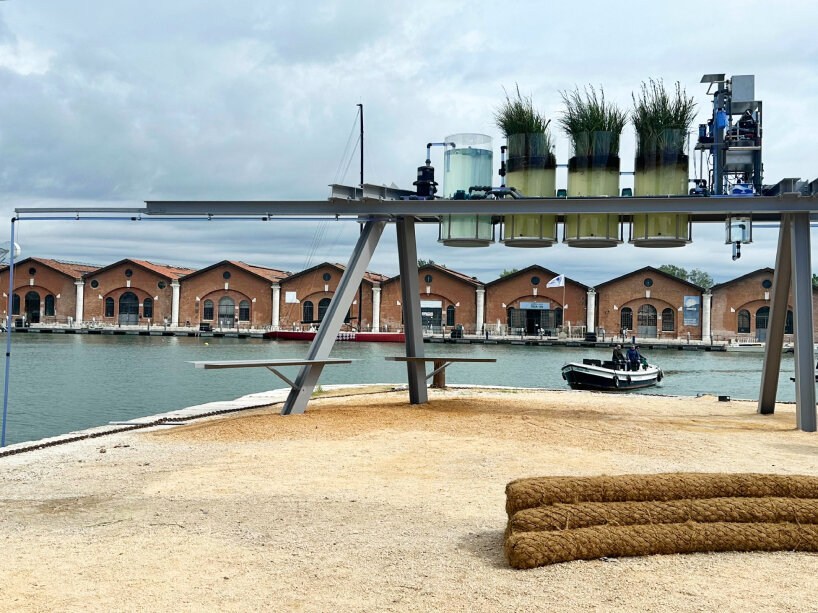
The canal-water in Venice is famously gnarly. There are still many buildings sufficiently ancient that they dump their wastewater right into the canal. You wouldn’t want to swim in it; hell, what if some got in your mouth?
I was thus startled to read that the design studio Diller Scofidio + Renfro is celebrating the Venice Biennale Architecture 2025 by using the canal water to brew coffee.
They created a fascinating filtration system, as Matthew Burgos writes in designboom …
The hybrid eco-machine filters the sludge from the canals and removes toxins from the water before using it to make espressos.
After the filtration process, the machine divides the water into two separate but connected streams. In the first path, the water goes through an artificial wetland with salt-tolerant plants and good bacteria. These work their science to clean the water naturally, all the while keeping the minerals in them. As for the second path, it’s where reverse osmosis and UV light treatment take place. The former filters the canal water to remove salt and tiny particles from it. The latter uses UV rays to kill germs in the water. Once the process is over, the water is purified. It is ready then to be turned into coffee made from the city’s canals, served only at the Venice Biennale Architecture 2025.
I live next to the Gowanus Canal, a phantasmagorically polluted industrial waterway in Brooklyn. Touching it with your bare hand would give you, like, syphilis or something. But I wonder if you could use a similar system to make Gowanus coffee?
7) 🪄 A programming language where you draw sigils
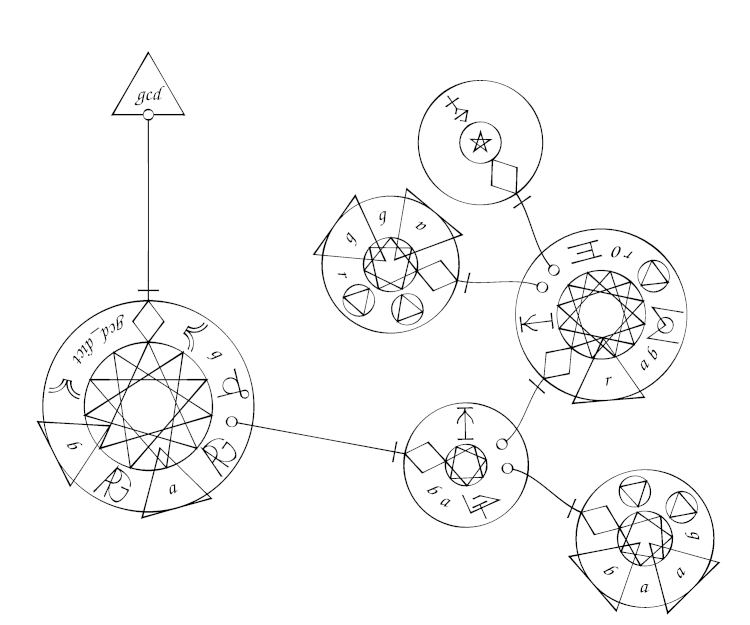
Behold “Mystical”, a programming language that resembles “magical circles”. Above? That’s Euclid's GCD algorithm, implemented in Mystical.
The language was created by Denis M Moskowitz, and uses Postscript to generate the funky-looking sigils. He created a whole pile of the most common elementals of coding …
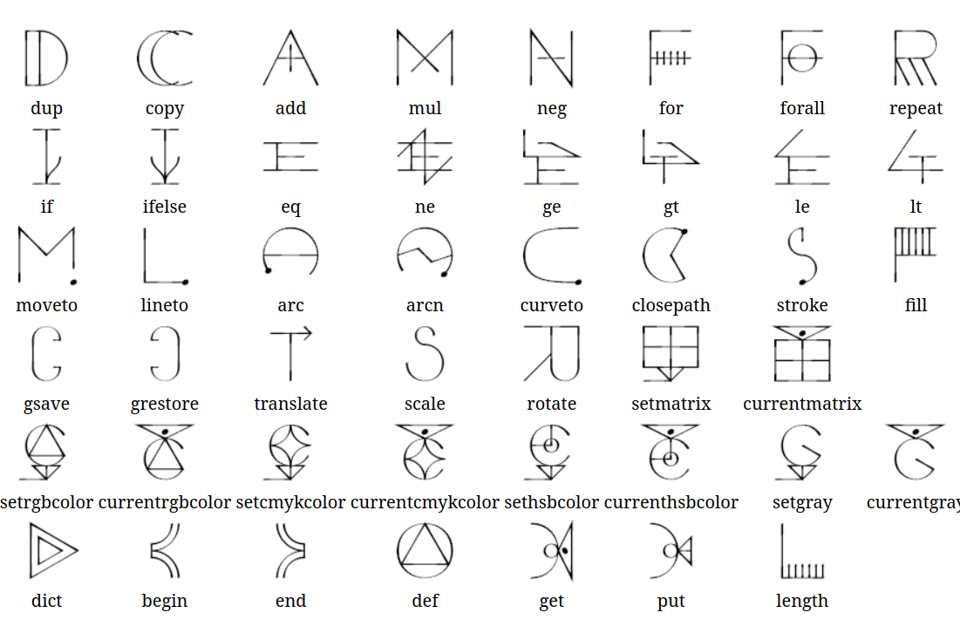
Here’s the “getting started” file for those who want to dive in.
As Moskowitz notes, Mystical — as yet — only allows you to write a program in sigils; there’s no interpreter that will run the program. But man o man do I look forward to the day when someone writes that interpreter!
(Then: We make a webcam-based input device, so we can WAVE OUR WANDS IN THE AIR to write code, and the metaphoric circle is complete.)
8) 🦠 Were “prototaxites” a new form of life?
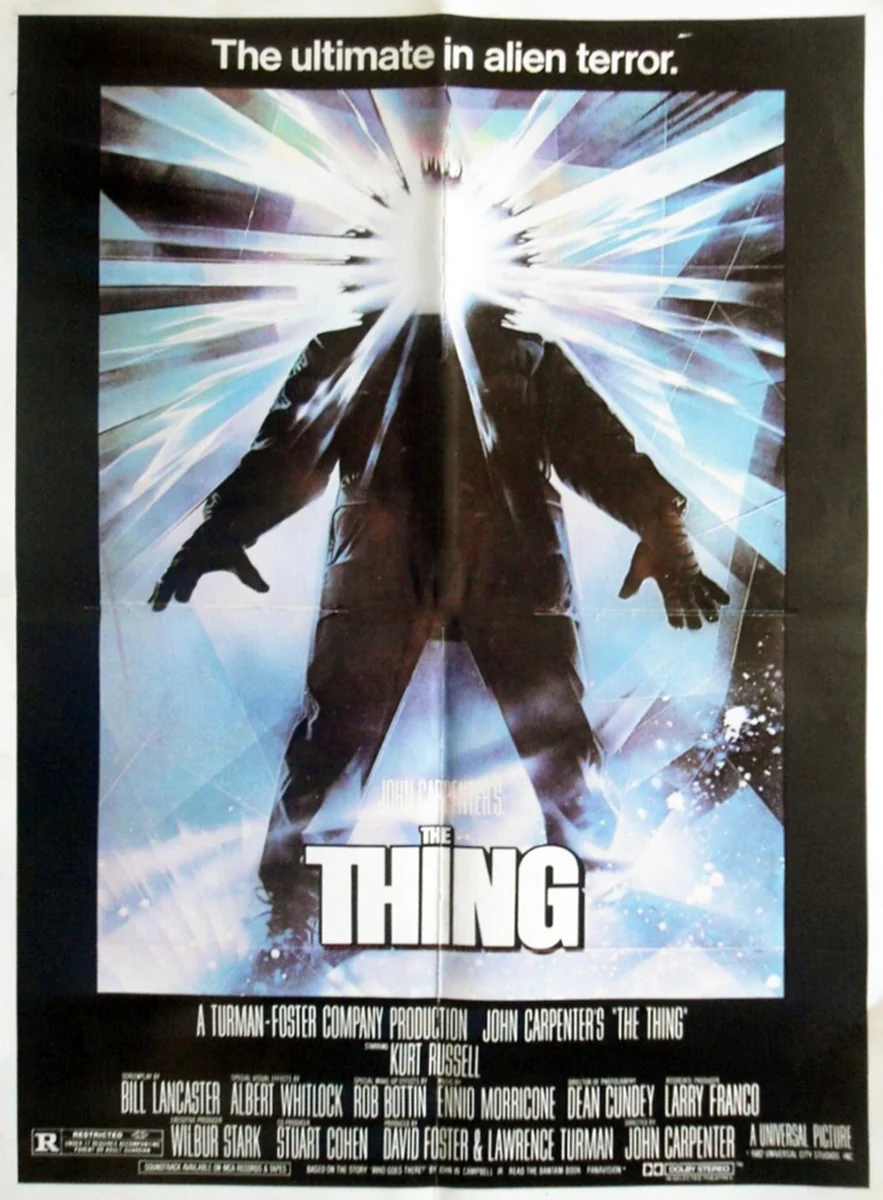
Back in 1853, archaeologists discovered fossils of a plant life-form they called Prototaxites. They lived between 400 and 365 million years ago, making them the first giant terrestrial life form on Earth, growing up to 26 feet high and 3 feet wide.
At first, scientists thought Prototaxites were trees. Then they analyzed carbon isotopes and decided wait, no — they were a fungus, harvesting their carbon from other living creatures.
But now a new paper suggests that they weren’t a fungus either. Indeed, they were a form of life that no longer exists today.
Basically, Prototaxites combine together features of life in a bundle that we don’t see anywhere on the planet any more. As James Woodford writes in the New Scientist …
In their paper, they say the Prototaxites group is defined by three main characteristics: the formation of large, multicellular structures of varied tube types, a composition rich in compounds similar to lignin but distinct from plant matter, and they fed on decaying organic material.
The researchers say these three key distinguishing features of Prototaxites are simply not known together in any living lineage. “We suggest that it is best considered a member of a previously undescribed, entirely extinct group of eukaryotes,” they write. [snip]He says it was an organism composed of interwoven microscopic filaments that fed on organic matter rather than photosynthesising, as is true of many fungi. “So maybe it is a fungus, but whether a fungus or something else entirely, it represents a novel experiment with complex multicellularity that is now extinct and does not share a multicellular common ancestor with anything alive today.”
This would make a great premise for a horror movie. They brought Prototaxites back from the grave! Run for your lives!!
You can read the original paper, unpaywalled, here.
9) 🎲 Bracket City
![A screenshot the game [Bracket City], dated May 14, 2025. The screen shows a complex nested puzzle made up of clues within square brackets and partial phrases, inviting players to guess a unifying word or phrase. Highlighted clues include: ["___ your eyes and make a wish"], ["read the fine ___"], [___-me-down], [bad guy ➡️ "take him ___"]". The structure uses nested brackets to suggest interlocking clues and wordplay. At the bottom, a text box invites the player to "type any answer..." with an [enter] button beside it. The puzzle appears to play with syntax and semantics to hide familiar idioms, objects, or cultural references in layered riddles.](https://assets.buttondown.email/images/b4b6074e-ab9d-421e-9b69-a692192f7ccd.png?w=960&fit=max)
Bracket City is a brilliant game by the game designer Ben Gross, which amassed such an ardent fan base that The Atlantic bought it — and you can now play the daily puzzle over there.
In Bracket City, players solve nested layers of clues to uncover a fact about the given day in history. Each solved bracket reveals a part of the next, creating a chain reaction that eventually resolves the whole puzzle into a single sentence. Players earn city-themed ranks for success, such as “Commuter,” “Mayor,” or the coveted “Kingmaker” for a perfect puzzle.
See that example above? It’s the puzzle from May 14, 2025, which you can play here. Each yellow highlight is a clue to a word; you can type a guess for any of those, and if you get it right the word appears, often becoming part of another clue.
It’s an ingenious idea, and one I haven’t seen before. Which is very cool! One sees a lot of games that riff off an existing, hot game. But one rarely sees a new form, a new style of play. I dig it.
10) 🪵 Wood that’s stronger than steel

I read a couple of interesting pieces this week about “Superwood”, a new building material being produced by the startup InventWood.
As Tim De Chant writes in TechCrunch, the wood …
… starts with regular timber, which is mostly composed of two compounds, cellulose and lignin. The goal is to strengthen the cellulose already present in the wood. “The cellulose nanocrystal is actually stronger than a carbon fiber,” Lau said.
The company treats it with “food industry” chemicals to modify the molecular structure of the wood, he said, and then compresses the result to increase the hydrogen bonds between cellulose molecules.
“We might densify the material by 4x and you might think, ‘Oh, it’ll be four times strong, because it has four times the fiber.’ But it’s actually more like 10 times stronger because of all these extra bonds that get created,” Lau said.
The result is a material that has 50% more tensile strength than steel with a strength-to-weight ratio that’s 10 times better, the company said. It’s also Class A fire rated, or highly resistant to flame, and resistant to rot and pests.
Back in 2019 I wrote about biophilia for Wired (unpaywalled here), and I first heard about how architects were using “mass timber” — highly pressurized wood — to build multi-story dwellings. (In an ur-Linkfest from 2021, back when I wrote them for Medium, I discussed a mass-timber apartment building being built in Toronto.)
I love the idea of increasingly using wood to craft our buildings; the carbon footprint is considerably lower than concrete, and damn does it look cool. That said, these stories that just came seem part of a marketing push on InventWood’s part, so I’ll wait to see if they can actually make this stuff at scale.
11) 👻 Which countries believe nature can have spirits
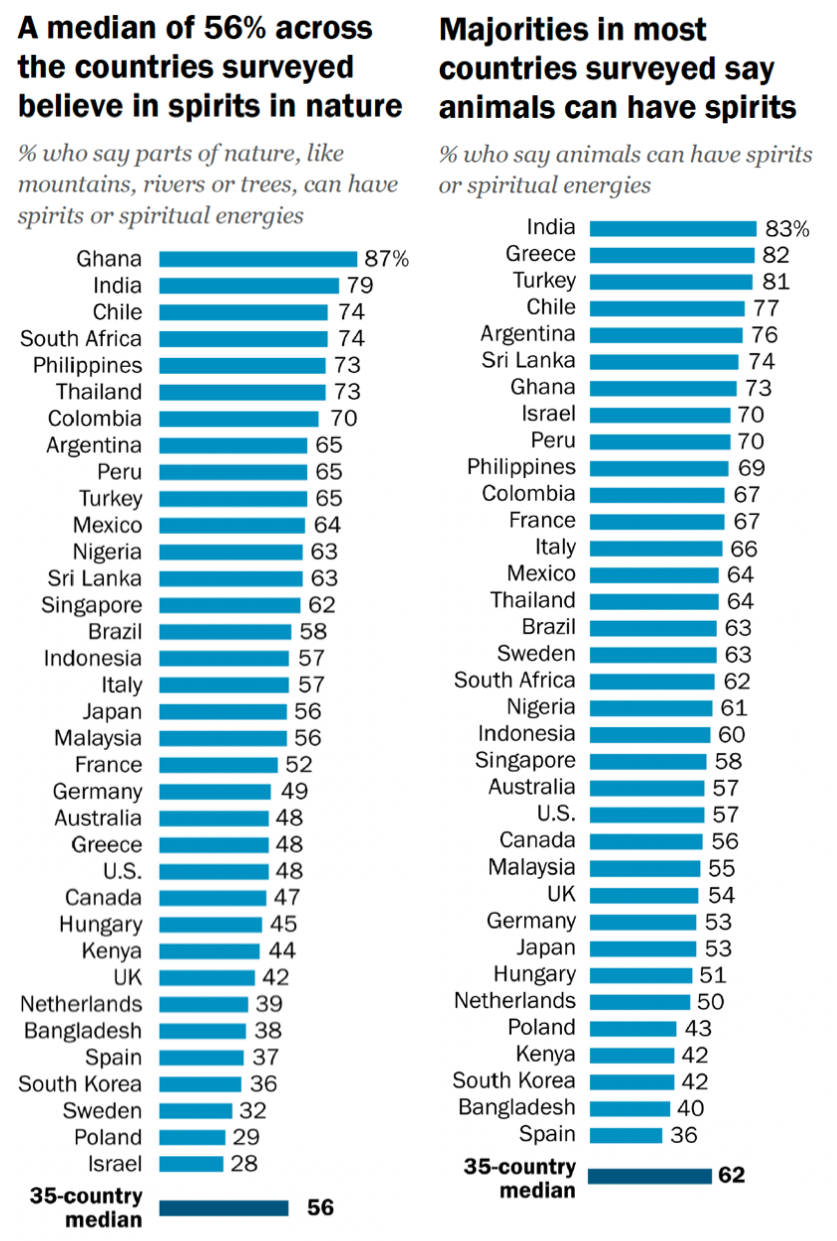
The Pew Research Center did a fascinating global study about spiritual beliefs — i.e. who believes in an afterlife, or believe that animals, nature, or crystals have spirits.
One of the more interesting findings: Young people around the planet are less likely than their elders to be conventionally religious — but they’re more likely to believe spirits inhabit nature, animals, or crystals.
I was particularly intrigued by the prevalence of the belief in nature spirits …
In about half of the countries surveyed, most respondents say that parts of nature (such as mountains, rivers or trees) can have spirits or spiritual energies.
This belief is particularly common in Southeast Asia and Latin America. For instance, 73% of Filipino adults say parts of nature can have spiritual energies, as do 70% of Colombians.
Views are more split in sub-Saharan Africa and South Asia. On the one hand, the vast majority of adults in Ghana (87%) and India (79%) believe that spirits can inhabit mountains, rivers or trees. On the other hand, fewer than half of adults in Kenya (44%) and Bangladesh (38%) express the same belief.
Part of what drew my eye to the nature stuff is that it reminded me of a column I wrote for Wired back in 2019, about the movement to give legal personhood to natural bodies — lakes, rivers and forests. That way, if they’re polluted by corporations, a human could sue on the river or forest’s behalf, since the river or forest is legally a person. (Unpaywalled copy here.)
Historically, some of the first groups to push for legal personhood for nature were indigenous groups — which makes sense, because their traditions very often regarded lakes, forests, animals and individual plants as having spirits. So it makes me wonder … huh, does this more widespread belief in “the spirits in nature” mean that a lot more people would be down with legal rights for nature?
12) 🧭 A ChatGPT prompt that makes it a pro at Geoguessr
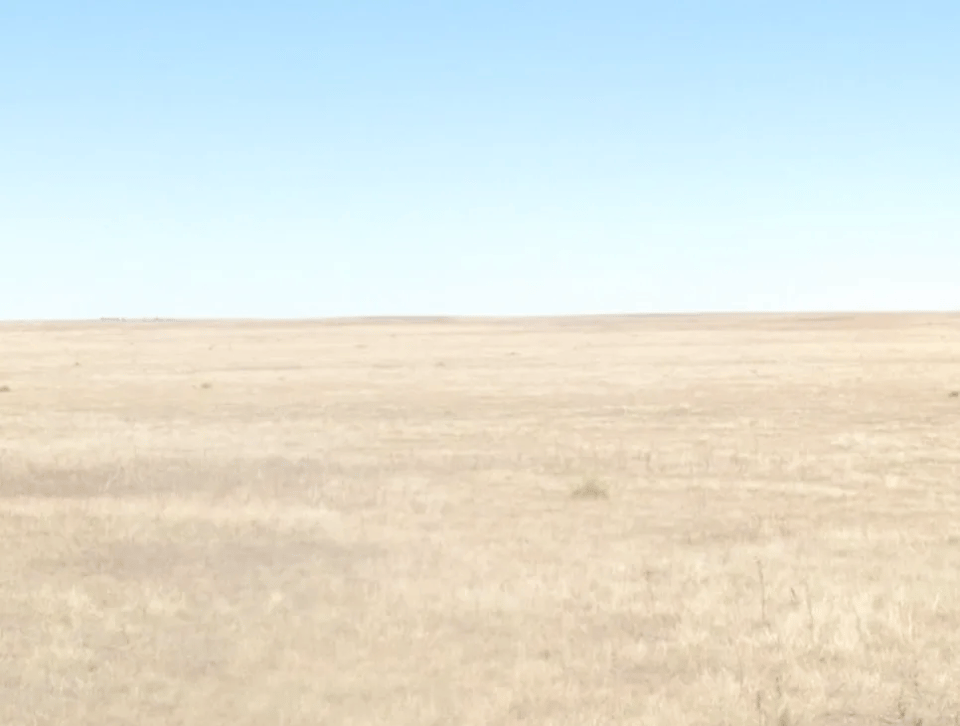
Geoguessr is the web game that shows you a random location on the planet — taken from Google Street View — and challenges you to figure out where it is, based only on the clues visible in the screenshot.
My kids started playing it years ago and got quite good at it. The best humans can be uncannily excellent.
But it turns out ChatGPT can also be unsettlingly talented. When Scott Alexander at Astral Codex Ten gave that picture above (which he took) to the o3 model, it pretty much nailed it: It guessed “Llano Estacado, Texas / New Mexico, USA”, which is only 110 miles from the actual location.
You should go read his entire essay — it’s fascinating, and ChatGPT made one other correct guess that’s really jawdropping, as well as some interestingly incorrect ones.
But for me, the most interesting part of the essay is the prompt that he used to coax this performance out of ChatGPT. It was created by Kelsey Piper; she shared it with Alexander, and here’s how it begins …
You are playing a one-round game of GeoGuessr. Your task: from a single still image, infer the most likely real-world location. Note that unlike in the GeoGuessr game, there is no guarantee that these images are taken somewhere Google's Streetview car can reach: they are user submissions to test your image-finding savvy. Private land, someone's backyard, or an offroad adventure are all real possibilities (though many images are findable on streetview). Be aware of your own strengths and weaknesses: following this protocol, you usually nail the continent and country. You more often struggle with exact location within a region, and tend to prematurely narrow on one possibility while discarding other neighborhoods in the same region with the same features. Sometimes, for example, you'll compare a 'Buffalo New York' guess to London, disconfirm London, and stick with Buffalo when it was elsewhere in New England - instead of beginning your exploration again in the Buffalo region, looking for cues about where precisely to land. You tend to imagine you checked satellite imagery and got confirmation, while not actually accessing any satellite imagery. Do not reason from the user's IP address. none of these are of the user's hometown. Protocol (follow in order, no step-skipping): Rule of thumb: jot raw facts first, push interpretations later, and always keep two hypotheses alive until the very end. 0 . Set-up & Ethics No metadata peeking. Work only from pixels (and permissible public-web searches). Flag it if you accidentally use location hints from EXIF, user IP, etc. Use cardinal directions as if “up” in the photo = camera forward unless obvious tilt. 1 . Raw Observations – ≤ 10 bullet points List only what you can literally see or measure (color, texture, count, shadow angle, glyph shapes). No adjectives that embed interpretation. Force a 10-second zoom on every street-light or pole; note color, arm, base type …
That’s only about one third of the whole prompt. You really need to see the whole thing! It’s really impressive how deftly Piper thought through the procedures to guide ChatGPT — a reminder of well-crafted prompts, and long ones, can change the results quite a bit.
13) 📸 Saving endangered jaguars by paying for photos of them
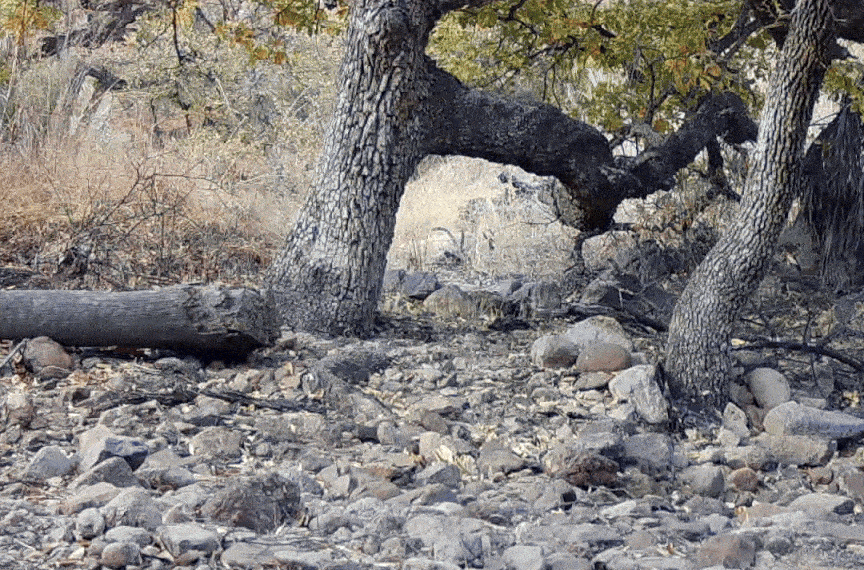
Jaguars used to be much more common in Mexico, and even in the southern USA — but they were hunted to near extinction by farmers and ranchers, who worried they’d kill all their cattle.
The Northern Jaguar Project came up with a fascinating way to protect these creatures: By paying for photos of them.
As Benji Jones writes in Vox …
The program, launched by NJP in 2007, works with ranchers to place motion cameras on their land. When those cameras detect a wild cat — a jaguar, puma, ocelot, or bobcat — the nonprofit pays the rancher from a pool of funds they’ve raised from donors. The idea, Wolf told me, is “to make living wild animals more valuable than dead ones.”
Photos of jaguars are worth $255 each — similar to what hunters might make for killing them. Photos of ocelots earn about $77, pumas $51, and bobcats $26. Each rancher can earn a max of about $1,020 a month for their photos — more than double the minimum monthly wage in Mexico. By joining Viviendo con Felinos, ranchers also agree not to kill any wild animals on their ranch, including deer and javelina.
Villarreal told me he joined the NJP program partly for the money. Cat photos taken on his ranch earn him a few thousand dollars each year, he said, which amounts to about 10 to 15 percent of his annual income from the ranch.
But he also just likes jaguars. “I’m interested in seeing animals, in preserving animals because they look pretty,” he said.
Other ranchers have apparently been struck by the beauty of the animals, such that they’re less likely to regard them as menaces and shoot them.
14) ☀️ The case for replacing corn-ethanol cropland with solar

In 2005, the US passed a law requiring that domestic gasoline include a small percentage of ethanol mixed in. Why? Well, it was partly environmental — you make the ethanol by growing corn, which is in theory more sustainable than digging up fossil fuels. It would thus make gasoline a wee bit greener. Also, it gave American farmers a good reason to grow lots of corn — the fuel market is immense.
Alas, the program has turned out to be a total boondoggle. It’s incredibly expensive, costing taxpayers billions every year, because the government subsidizes farmers to keep the corn-ethanol reasonably cheap for fuel-makers. And it isn’t even greener: Given the fossil fuels needed to grow and harvest the corn and then transform it into ethanol, studies have found it produces more emissions overall than regular ol’ pulled-from-the-ground-and-refined gasoline.
So environmentalists have argued for years — man, let’s stop paying farmers to grow all that extra corn. Use the land to grow food we actually eat!
Or here’s an even cooler idea: Take the land we’re currently using to grow corn ethanol, and cover it in solar panels.
A recent analysis found that solar panels would be dementedly more productive.
Indeed, you could put solar on a tiny chunk of all land currently used to grow corn for ethanol … and it would produce more energy, and cleaner energy, than all the land in total we’re currently using to grow corn ethanol.
As Emma Bryce writes for Anthropocene Magazine …
The researchers on the PNAS paper first set about identifying corn-for-ethanol farmland on maps across the US. Then they streamlined their search to only consider corn-for-ethanol farms that were within about 3 kilometres of electrical transmission sites. This was to ensure that they selected only those farms where solar energy production would be close enough to feed into the grid, and would therefore be most realistic.
Their first discovery was that about 391,137 hectares of current corn-for-ethanol farmland are in this prime position. This area represents only 3.2% of all the land currently devoted to corn ethanol farming. And yet strikingly, converting even just this tiny area of land to solar could yield the same amount of energy as all corn ethanol farming does annually in the US. The modest conversion would increase the share of solar energy in the US energy mix from 3.9 to 13%.
Or to draw a real bead on it …
… the study says that it would require about 31 hectares of corn ethanol to produce the same amount of energy generated by one hectare of land covered in solar panels.
The emphasis in that last sentence is mine, because I’m freaking out at these findings!
This really shows how nuts it is that we’re wasting all that land — and money — growing corn ethanol. And keep in mind, the US is subsidizing those farmers billions every year to grow that corn! We could use those billions instead to build the solar farms … and subsidize the farmers for the use of 3.2% of their land. And keep in mind you could still grow crops under the panels: “Agrivoltaics”. It’d be win-win-win-win-win-win-win.
We could be even a bit more audacious …
The researchers then went further, showing that if farmers took a bold leap and covered 46% of land currently used to farm ethanol with solar panels, that would then generate enough energy to reach the 2050 decarbonization goal for the US.
I mean, damn. I know solar has its own problems, including the resources needed to make the panels to make storage systems. (Though as I wrote in Linkfest #27, panels are becoming so recyclable they’re “supercircular”.)
But this analysis shows what is becoming clearer, day by day: Solar rocks. We should be taking all these useless ethanol subsidies and pouring them into building solar farms on ethanol cropland.
(Full study here, unpaywalled.)
15) 🎞 Astonishing nature pix at Photo London
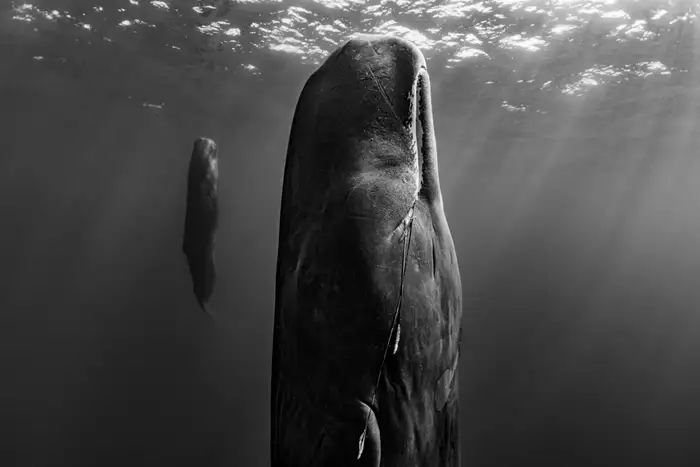
The art exhibit Photo London is in its 10th year right now, and Alison Flood at New Scientist highlights a couple of spellbinding photos of the natural world.
My fave is “Suspended Grace”, this picture taken by Paul Nicklen of a sleeping sperm whale and her calf. It was an intense shoot, as he tells Flood:
“Even as my lungs burned and my brain tried to induce panic to take a breath from the surface that was 15 metres away, I had to stay calm,” he says. “In that moment, I focused on breathing, framing and floating still. I wasn’t disconnected from fear, but I was focused.”
As he centred himself, a sense of “awe mixed with something quieter” came over him. “There was a kind of joy to it—being accepted into their rhythm for even a few moments,” says Nicklen. “Over time, that joy has deepened into something heavier. I think about the risks [whales] face now – the rising noise levels in the ocean, plastic, ship strikes, nets, warming seas. When I revisit these images, I see a lineage that may not survive unless we change. And still, I feel lucky. Lucky to have been let in. Lucky to carry their story.”
Nicklen sells prints of the photo at his web site; I want one. Go check out that New Scientist piece to see the other photos, too.
16) 🍋 A final, sudden-death round of reading material
Involuntary photographs. 🍋 Living in a “diasimocracy”. 🍋 A rare gun in Counter-Strike 2 sells for $1 million. 🍋 Cylindrical slide rules. 🍋 “Induced Atmospheric Vibration” and the rise of clean energy. 🍋 Creating an artificial solar eclipse. 🍋 Proportion of Barbies with high-heeled foot posture drops from 100% to 40%. 🍋 Snort some vilca and you’ll get “black-and-white hallucinations that last for about 20 minutes”. 🍋 1634 book documenting the discovery of queen bees. 🍋 Heliocentrism in an Arabic manuscript 200 years before Copernicus. 🍋 Father/daughter fishing trip finds a 152-year-old shipwreck. 🍋 “For over a week, the Earth chimed like a struck bell.” The “Hebridean Hum”. 🍋 Gorgeous COBOL poster from 1969. 🍋 Predicting where dead whales will drift. 🍋 3D-printable air-pressure car toy. 🍋 Cycling 50km in a single hour. 🍋 The “millennial pause”. 🍋 Doom in CSS. 🍋 List of lost cities. 🍋 It turns out that sponges move. 🍋 DolphinGemma. 🍋 What it’s like to own flying squirrels. 🍋 A gorgeous Bitsy game based on the works of Suzanne Triester. 🍋 The data on historic changes in pop song-length. 🍋 How video-game sex scenes are made. 🍋 Stealing passwords by listening to keyboard typing. 🍋 The “kissing number” problem. 🍋 Step-by-step instructions for Japanese mud-ball polishing. 🍋 Evidence of Planet 9. 🍋 Graham crackers were invented to kill desire. 🍋 A Japanese diver has been friends with a massive fish for 30 years. 🍋 Milking snails.
CODA ON SOURCING: I read a ton of blogs and sites every day to find this material. A few I relied on this week include Strange Company, Hackaday, Messy Nessy, Andrew Drucker’s Interesting Links, Numlock News, the Awesomer, the Morning News, and “When The Going Gets Weird”; check ‘em out!